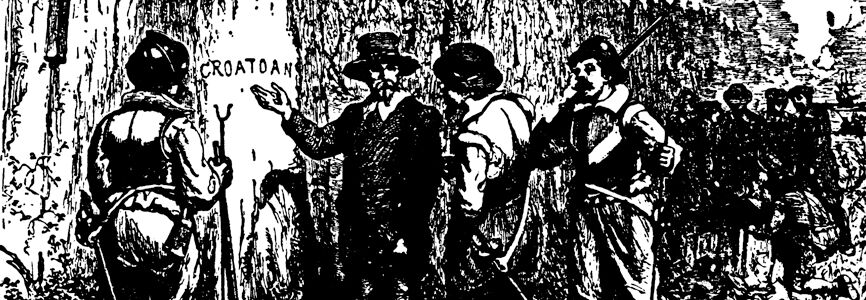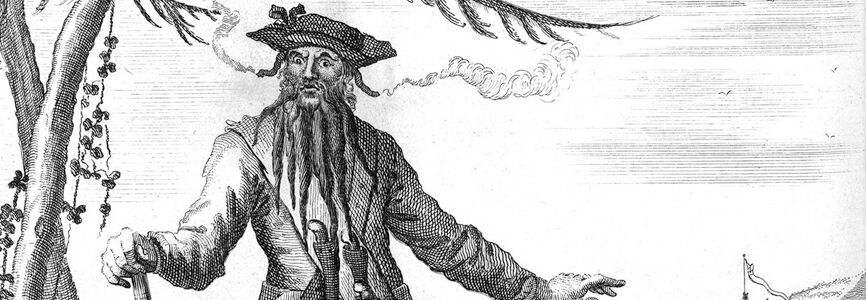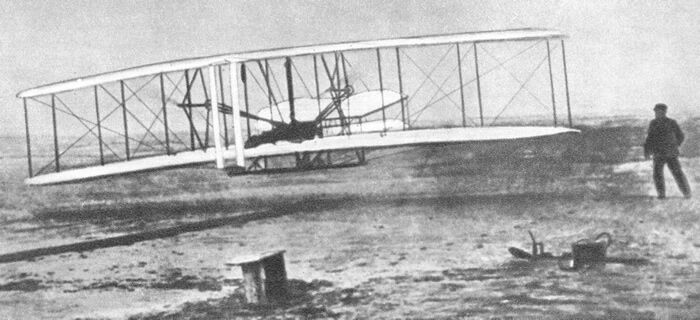The History Of The Outer Banks
The Outer Banks of North Carolina seems to have risen from the sea approximately 10,000 to 12,000 years ago, making it a geologic infant. The first Native Americans arrived between 1,600 and 2,000 years ago, although this is simply speculation. From recorded history, the Outer Banks began with the arrival of European explorers.
Early European Explorers

Amerigo Vespucci was most likely the first European explorer to reach the Outer Banks, although the evidence is circumstantial. If this is factual, it occurred during his first visit to the New World during a 1499-1500 voyage. European explorers believed they were exploring a new land, but the area was already well populated with Native Americans of the Algonquin language group, who had been living on the Outer Banks for the past 1,000 years. The early Europeans who came in contact with them thought the Indians were unsophisticated savages, largely because they were not Christians.
Yet these peoples were anything but unsophisticated. Organized into small city-states, with a large village where the chief resided, this area served as an administrative center for the surrounding area. The “city-states” had recognized boundaries and well-defined political roles. Though these tribes were isolated from one another in distance, there is considerable artifact evidence that Native Americans from the mountain regions of North Carolina visited here and engaged in trade.

By the time the first English military venture outpost, which is now referred to as the “Lost Colony,” was established on Roanoke Island in 1585, the Outer Banks coastline had already been explored by a number of expeditions, most of them Spanish. It is likely the Native Americans the colonists encountered had either previously met Europeans or were well aware of their explorations of the area.In 1587, the first 115 permanent English colonists arrived to find an empty outpost at Roanoke Island. The colonists chose to remain, but sent a ship back to England requesting aid and supplies. Because of the impending Spanish Armada, Queen Elizabeth 1 of England refused to allow a relief ship to sail, and it was not until 1590 that a ship crossed the Atlantic and arrived on Roanoke Island, only to find an abandoned colony. The only clue was the word “Croatan” that was carved into a tree.
There are no written records of why the colony on Roanoke Island failed. Records that returned to England indicate the initial reception by the Indians was friendly, but their good will was eventually destroyed by Governor Ralph Lane’s heavy handed approach towards them. When a silver cup was reported stolen, Lane ordered the local village burned and ransacked. Understandably, the Indians resented the action and a series of raids against the settlers followed.
This incident, and the refusal of local chiefs to help colonists adjust to their new land, doomed the expedition. There is speculation, but no proof, of the ultimate fate of the colony. A map created by the colony’s governor, John White, was recently re-examined, and researchers found a clear indication of a fort about 50 miles inland, in what is now Bertie County. The theory holds that White and the colonists had agreed to move inland before the return voyage to England, and the icon on the map indicates the location.
Another theory involves the Lumbee Indians of Robeson County. The Lumbees speak a dialect of English very distinct from surrounding dialects. As a tribe, they have always maintained they are the descendants of the colonists from the Lost Colony, and the first English frontiersmen to reach them in the 16th century remarked upon their European features and European style square-framed homes. In addition, the tribe also has a remarkably long tradition of practicing Christianity.
Although the Roanoke Colony failed, settlement by the European powers was inevitable. With the defeat of the Spanish Armada, the British became the dominant colonial power of the 17th century. Firmly established in Virginia, the English began expanding their holdings, and by the late 1600s had migrated to what are now Dare and Currituck Counties. Around 1665, the first permanent settlement, Colington Island, was established. In 1668, Currituck County was established, making it one of the oldest counties in the state.
The Age of the Pirates

With its ever-shifting shoals and constantly opening and closing inlets, the Outer Banks were the perfect haven for pirates. From the late 17th to the early 18th centuries, coastal North Carolina was a hotbed of piracy.
Because shipping routes hugged the coast of North America, as ships sailed between northern ports and southern sugar cane and rum transports, they were easy prey for a well-armed sloop with a captain who knew the local waters. North Carolina government officials were lining their pockets with money made by permitting pirates to offload their cargo in local ports, so complaints from neighboring colonies fell on deaf ears.
The most notorious of the pirates, Blackbeard (his real name was Edward Teach), used Ocracoke as his homeport. In 1718, after calls for help were ignored, Governor Spotswood of Virginia dispatched Lt. Robert Maynard of the British Navy to hunt down and kill or capture Blackbeard. On November 19th, after a furious boarding action, Maynard killed Blackbeard, beheaded him and mounted his head on the bowsprit of his ship, the HMS Ranger. The action took place off what is now Atlantic Beach, south of the Outer Banks. Blackbeard was not the only infamous name plying the pirate trade off North Carolina. In his day, Stede Bonnet was as well known as Blackbeard; he too met his end in 1718, at the end of a rope in Charleston, SC. Blackbeard and Stede’s fates were indicative of the end of the age of piracy. In England, laws were passed that allowed the colonies to try pirates in local courts. Before those laws, they had to be shipped back to England for trial. Coupled with stronger enforcement the result was inevitable.
Lighthouses

After ratifying the Constitution in 1789, one of the first acts of congress from the newly formed U.S. government was to fund the U.S. Lighthouse Establishment and begin the process of creating lighthouses to protect shipping along the coastline. The act was the first transportation bill created by the new government, and from that act, the lighthouses that line the Atlantic seaboard from Maine to Florida and the formation of the U.S. Coast Guard can trace their beginnings.
The dark seacoast and stormy seas of Diamond Shoals were long known as one of the most treacherous stretches of ocean along the East Coast. For this reason, in 1797, Congress appropriated $44,000 to construct a lighthouse at Cape Hatteras. Completed in 1803, the first lighthouse was 112 feet above the sand with a light that could be seen from 18 miles on a clear day. However, repeated reports indicated that the light was too weak, moving Navy Lt. David D. Porter to observe in 1851 that “Hatteras Light, the most important on our coast is, without doubt, the worst light in the world.”
Because of its strategic importance, the Hatteras Lighthouse was dismantled during the Civil War, and it was not until 1868 that funds were approved for the new tower. Although $80,000 was appropriated, cost overruns more than doubled the price to $167,000. What the government got for its money was a light that could be seen 28 miles out to sea, and at 207 feet, the tallest lighthouse in the United States. It was an extraordinary feat of engineering—withstanding hurricanes, flooding and the corrosive effects of salt laden winds for over 140 years.
In 1999 the lighthouse, threatened by the eroding shoreline, was moved back from the sea and now stands 1,600 feet farther from the Atlantic Ocean. The Hatteras Lighthouse is the most iconic of the four lighthouses spanning the Outer Banks, and, at 210 feet, is the tallest brick lighthouse in the United States. Replacing an older obsolete lighthouse, the Ocracoke lighthouse was completed in 1823. Only 75 feet high, it is a solid example of early lighthouse construction, with bricks 5 foot thick at its base and 2 feet thick at the top. Still in use today, the Ocracoke Light is the second oldest operating lighthouse in the country.
As early as 1838, government officials recommended a lighthouse north of Cape Hatteras to mark the beginning of the Outer Banks shoals of Pea Island. After a series of delays, in 1847 the first Bodie Island Lighthouse began casting a beam out to sea. Located just south of Oregon Inlet, the site is now under water. Unfortunately, the contractor did not follow the engineer’s specifications to build the structure on a supported brick foundation and within two years the tower was leaning. Attempts to correct the problem were unsuccessful, so in 1859 the structure was abandoned. However, a replacement tower was quickly built, and in less than a year, a new light was illuminating the Atlantic. It was a short-lived existence for the second Bodie Island Light. Fearing advancing Union troops would use the lighthouse as an observation post, retreating Confederate soldiers blew it up in 1861.
After the Civil War, it took the Federal Lighthouse Board five years to agree to replace the light. Using brick and other materials from the just completed Hatteras Light, the Bodie Island Light was moved to the northside of Oregon Inlet, onto a 15 acre site that is now on the southern edge of South Nags Head. Construction was completed relatively quickly, and in 1872, the first order Fresnel light began shining out to sea. After the Bodie Island Light was completed, the last remaining dark spot on the Atlantic Coast was the 70 miles stretch between the Cape Henry Light in Virginia and Bodie Island. In 1873, construction began to remedy this void, and two years later the 158 foot Currituck Beach Light in Corolla went into operation. The Outer Banks lighthouses are still in use today, although their beacons are automated. The distinctive coloration of the structures is a daytime aid to navigation and at night, each light has its own pattern to guide mariners. Currituck Beach, Bodie Island and Hatteras Light are available to climb. Currituck Beach is owned and operated by the Outer Banks Conservationists and can be climbed year round. Bodie Island and Hatteras Light are part of the National Park System, and tours and climbing are available from late April through Columbus Day. All lighthouses charge a fee.
Civil War
The same conditions that made the Outer Banks an ideal pirate playground created the perfect opportunity for the Confederacy to raid coastal shipping at the beginning of the Civil War. Quickly realizing the potential danger, Union forces moved with surprising speed and in August of 1861, four months after the start of hostilities, the North attacked forts protecting Hatteras Inlet, the inlet separating Hatteras Island and Ocracoke. The forts were understaffed and poorly constructed. Cannons used by the Confederates were hopelessly outranged by the rifled cannons of the Union fleet. After a day of shelling,
Confederate forces at Fort Clark on Ocracoke Island fled to Fort Hatteras. A day later, after hours of intense shelling, the 700 remaining soldiers in Hatteras surrendered. The surrender of Fort Hatteras to Union forces was the first major victory for the North in the Civil War. After taking Hatteras, a series of skirmishes ensued, but the desired prize was Roanoke Island with its direct link to the transportation network of northeastern North Carolina. By February of 1862, Union forces were moving in strength to take the island. Almost from the time Union forces captured Hatteras, Confederate commanders on Roanoke Island recognized how vulnerable the island was and requested reinforcements and cannons. However, their pleas received little response. When the battle began on February 7th, the Confederate forces, consisting of only 3,000 soldiers and less than two dozen cannons, fought against General Burnside’s 10,000 men and flotilla of gunboats. After a day of heavy shelling, skirmishes and light casualties, the 2,500 remaining southern troops on Roanoke Island surrendered. The capture of Roanoke Island was significant for a number of reasons. Militarily, it allowed the Union Army to take many of the towns and small cities on the surrounding Outer Banks sounds. It also forced the South to commit troops and resources to keep the northern forces from expanding their position.
General Burnside, when confronted with slaves brought to Roanoke to build fortification, declared them contraband of war, a move that effectively freed them. Word spread that any slave that made it to Roanoke Island would be freed; by war’s end the Freedman’s Colony on the north end of the island had a population of 3,000, complete with schools, churches and a town government.
Hunt Clubs
The Outer Banks has always been a vacation retreat, but at one time the seasons were reversed and the fall and winter were times when visitors would travel from cities of the northeast. From 1857, when the Currituck Shooting Club was incorporated, until the 1960s, life in Dare and Currituck Counties revolved around wealthy hunters traveling from the north during winter months and robust farming during the summer months.
Remnants from that time are everywhere. The opulent lifestyle of Edward Collins Knight, who built the Whalehead Club for his wife, is the most apparent reminder. But there are others as well. On Pea Island, the impoundment ponds at the visitor’s center are what remain of a hunt club. The Currituck Club in Corolla, with its award winning golf course, occupies the same land that the first Outer Banks hunt club owned. Until recently, the Pine Island subdivision and Audubon tract was an active hunt club, and the original building remains. The Powder Ridge Gun Club in the Town of Duck is now a bookstore and coffee shop. Even today, the tradition of hunting still exists. The sounds are dotted with duck blinds, and seasonal hunting remains a long-standing tradition for landowners and private hunt clubs.
The Wright Brothers

After writing to Orville and Wilbur Wright that there were plenty of open beaches and steady winds on the Outer Banks, County Commissioner and Kitty Hawk Assistant Postmaster, William Tate, concluded his letter with, “I assure you, you will find a hospitable people when you come among us.” A few weeks later, towards the end of September of 1900, Wilbur Wright showed up unannounced at Tate’s front door. Shortly after, Orville followed and the brothers set up camp at the base of Kill Devil Hill. It was there they discovered what Tate had not included in his letter. “There was no escape. They chewed us clear through our underwear and sox. Lumps began showing up all over my body like hen’s eggs,” Orville wrote to his sister, Katherine, describing the mosquitoes that plagued their camp. Mosquitoes notwithstanding, the Wright brothers had found the testing grounds they needed. The people were indeed, “hospitable,” although somewhat skeptical. This area was isolated from the prying eyes of the press, the winds were brisk and predictable, and the sand was a forgiving landing zone.
During the first three years, 1900 through 1902, the Wright brothers conducted a series of glider experiments. It was no accident that they were the first to achieve powered flight. Although neither brother finished high school, they were scientists in the truest sense of the word. They questioned everything, tested and retested, and ultimately proved that the generally accepted formula for lift was wrong. They came up with the basic model for how a propeller moves air. Although we have vastly improved their methods of controlling flight, Wilbur and Orville Wright were the first aviators to understand and develop a practical way to control an aircraft. We still use the same principles today. By 1903 they were ready…but there were delays. Unable to find an engine that met their requirements, they had their bicycle shop manager, Charlie Taylor, build one. Propeller shafts broke, the weather wouldn’t cooperate and it was not until December that they were ready to prove they could fly. Wilbur made the first attempt on December 14th, a three second flight that the brothers rejected as “only a partial success.” December 17th was the next attempt, a cold day
with the wind gusting to 27mph. At 10:35 a.m., with Wilbur at the controls, the Wright Flyer lifted off the ground and flew. It was a short flight, only 12 seconds, covering just 120 feet, but the flight and the landing were clearly controlled. This flight was recorded in an iconic image snapped by John T. Daniels of the local Lifesaving Service crew. They made three more flights that day, the third lasting 59 seconds and covering 852 feet before a crash landing ended the day. Interestingly, while today the Wright Brothers Monument is in Kill Devil Hills, at the time Wilbur and Orville flew the area was known as Kitty Hawk. The hill that the Monument tops is now in Kill Devil Hills, but it was a migrating sand dune in 1903 and appears to be significantly south of the original location at the time of the flight. The dune has since been stabilized by planting beach grass around its base and up its sides. The grounds and museum of the Wright Brothers Monument tell an extraordinary tale of perseverance, creativity and genius.
The Outer Banks has a rich and diverse history that has a common thread of exploration, ingenuity, adventure and discovery.
